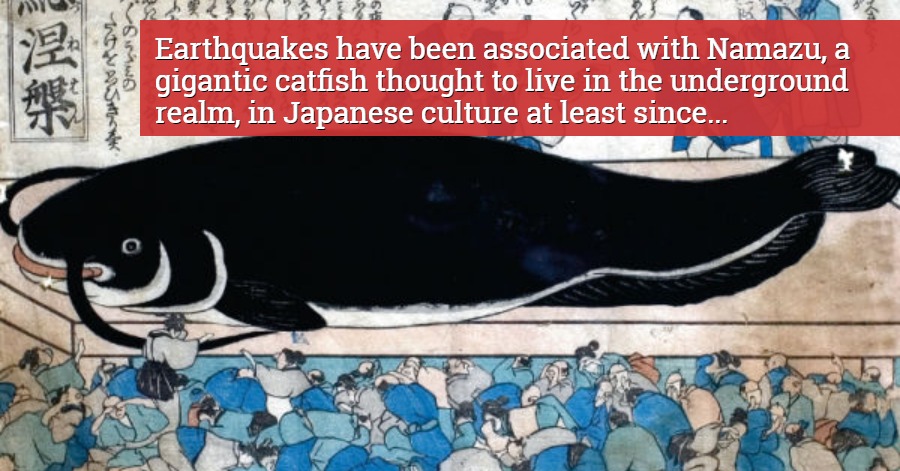Traditional explanations for natural disasters exist in all cultures and predate scientific answers. When it comes to animals, strange things happen. The great majority of catfish, which live primarily in freshwater surroundings are thought to be safe. But in ancient Japanese folklore, catfish, on the other hand, was the polar opposite of harmless.
Earthquakes have been associated with Namazu, a gigantic catfish thought to live in the underground realm, in Japanese culture at least since the 15th century. Following the Great Ansei earthquake of 1855, which devastated Edo (now Tokyo) with a magnitude of 7.0 and killed over 7000 people, the theory that enormous catfish were to blame quickly gained traction.
But how can a fish causing all the commotion?

The Namazu was said to live in underground lairs deep beneath Japan in Japanese mythology and were kept in check by the god of thunder Kashima with a gigantic boulder known as the kaname-ishi. After Kashima had left town and left the god of fishing and commerce Ebisu in charge, the Great Ansei earthquake is reported to have struck. Unfortunately, Ebisu fell asleep on the job, allowing the catfish to freely thrash their fins on the underbelly of the landmass, resulting in devastating tremors. In the aftermath of the earthquake, catfish became generally feared creatures, yet certain socioeconomic groups, particularly working-class people, began to worship the namazu.

It’s conceivable that the mythology of Namazu evolved from Japanese fishermen’s tales that catfish could anticipate earthquakes. Following the Ansei Edo earthquake of 1855 in the mid-nineteenth century, one Japanese fisherman said that he had witnessed catfish acting suspiciously just before the earthquake. Similar accounts concerning tsunamis (tidal waves) that occurred in the late 19th and early 20th centuries have been told by Japanese fishermen. Although the mythology of Namazu had previously been around for generations, it’s probable that similar claims made by ancient fishermen influenced the creation of the legend.
Others however believed that earthquakes were once more typically connected with dragons or serpents. Because dragons are associated with water in Chinese and Japanese cultures, the transition from dragons producing earthquakes in the watery depths to catfish causing earthquakes in pre-modern Japanese popular imagination was not a huge leap. Giant catfish appear to have essentially overtaken dragons as the principal cause of earthquakes in Japan by the 19th century.
Namazu, a mixture of cosmology, politics and religion
Natural calamities were understood by many ancient cultures as the outcome of divine wrath or cosmic imbalance. An earthquake in Japan in the mid-nineteenth century was more than simply an opportunity to criticise the government for not performing its job properly. Many Japanese people likely mistook the earthquake for a sign that the government had fallen out of step with cosmic justice. The government’s moral competence to govern had deteriorated, and the cosmos was striving to remove it, restoring moral order.

Religion, cosmology, and politics are now regarded as distinct entities. They were, nonetheless, connected in the ancient world, and even in the early modern world. Political implications arose from cosmic disruptions, as well as evidence of divine wrath or providence. Namazu, a mythical giant catfish who dwelt in the depths of the ocean, became a political emblem for redressing economic and social injustice in 19th century Japan in this fashion.
Although most Japanese no longer believe in Namazu, and how many did in ancient Japan is debatable, Namazu is an example of a phenomenon that still exists today when people perceive natural calamities as a sign of divine anger or cosmic imbalance.
Sources:Ancient Origins, Sabukaru Online, History of Geology









Leave a Comment